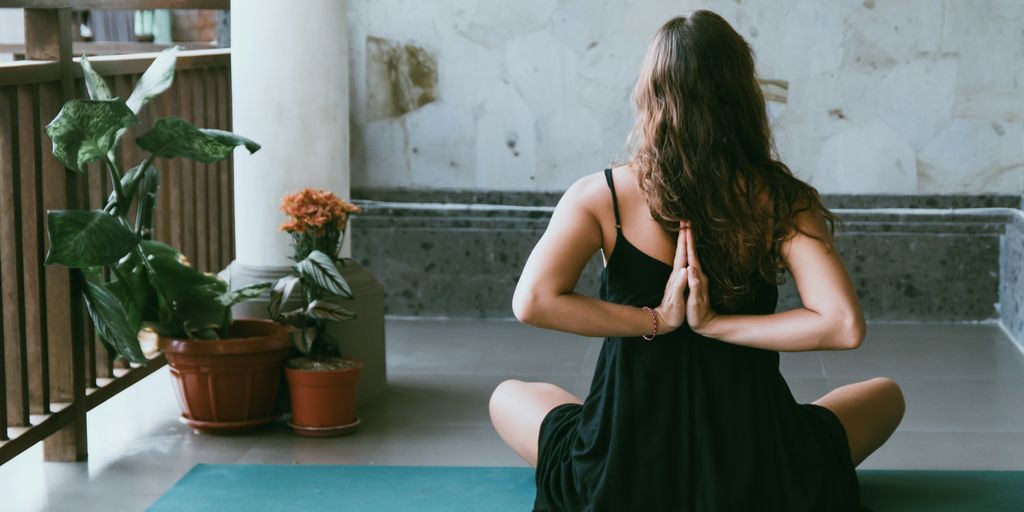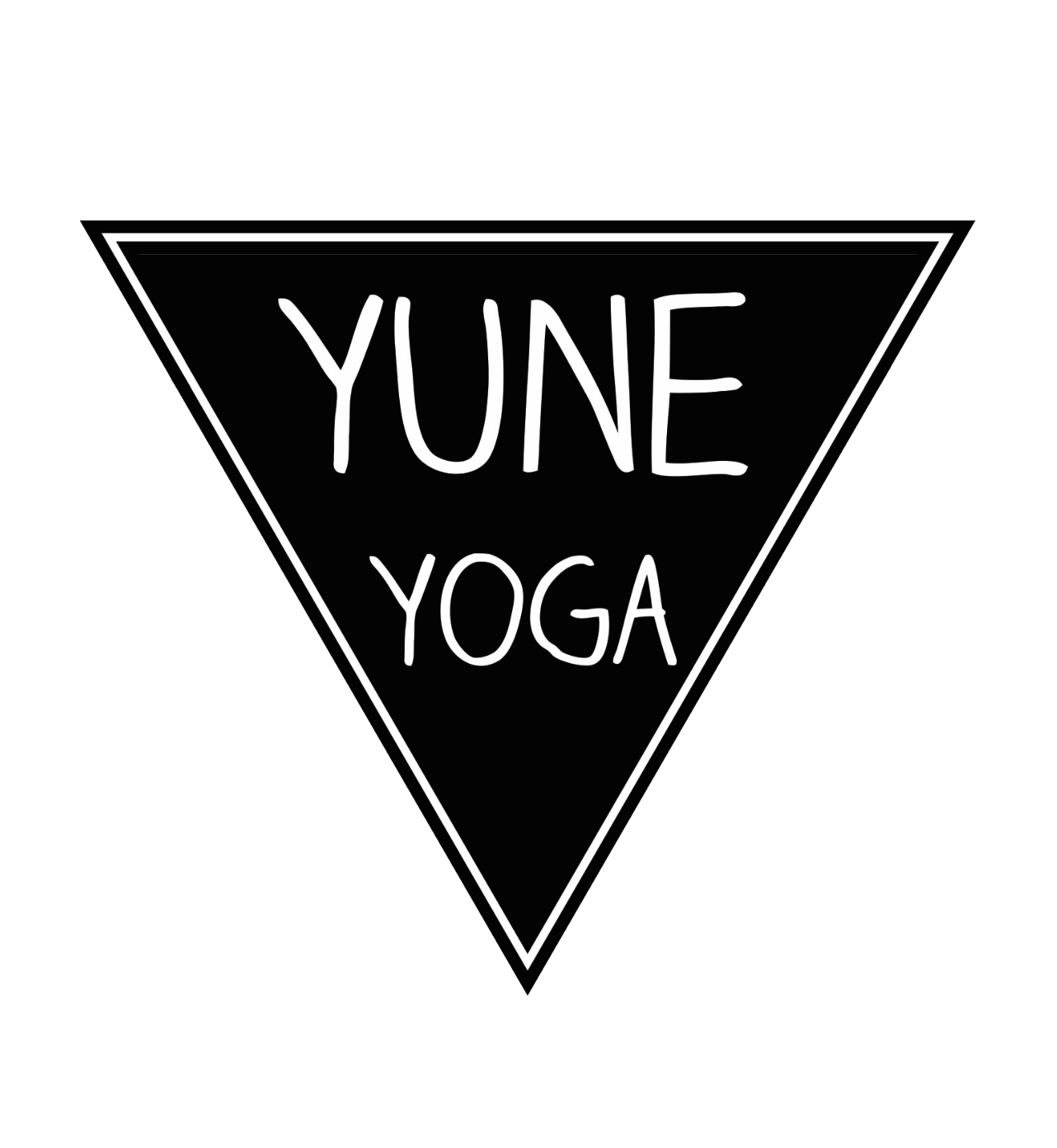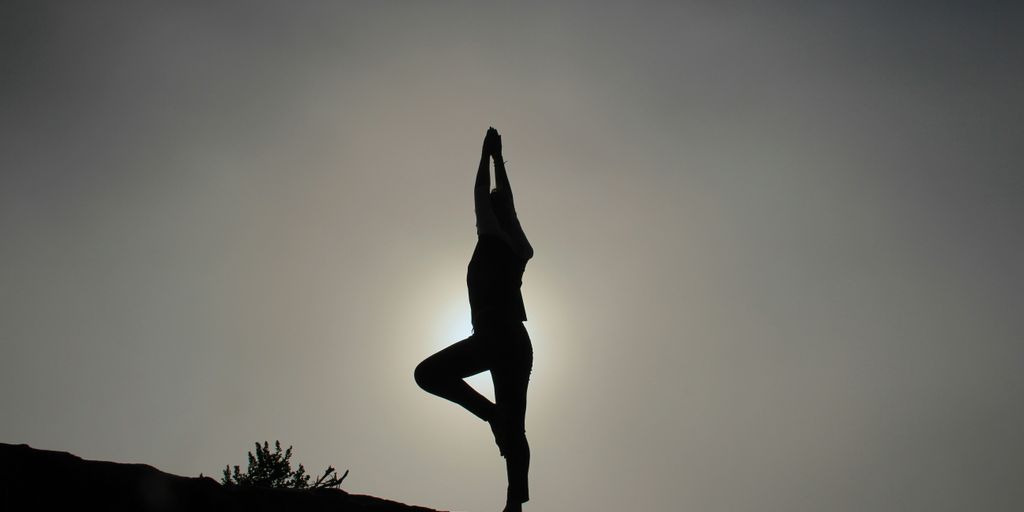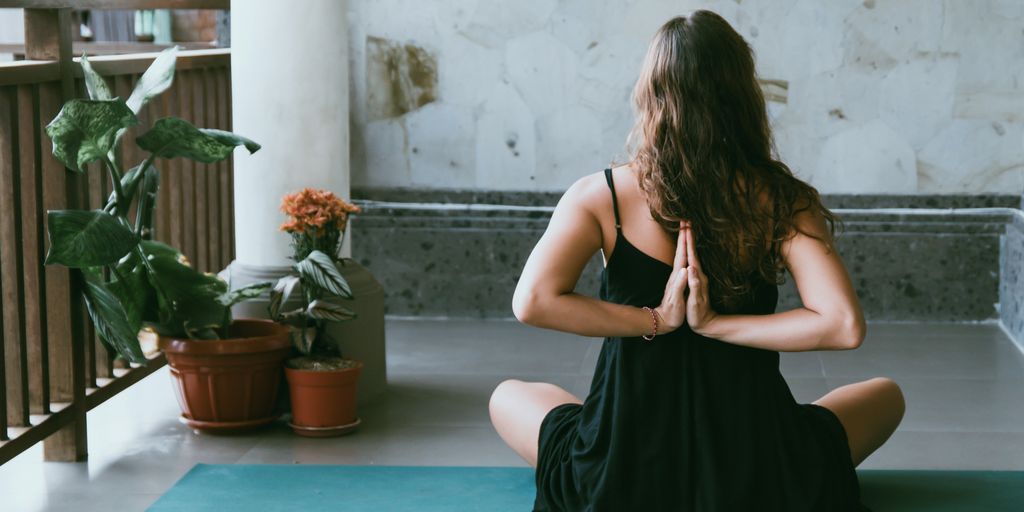
Essential Tips and Poses for Yoga Beginners: Your Ultimate Start to a Peaceful Practice
Starting yoga can feel a bit daunting, especially if you're not sure where to begin. But don't worry! This guide is packed with practical tips and simple poses designed specifically for yoga beginners. Whether you're looking to find some peace in your hectic day or just want to stretch out and feel good, this article will help you kick off your yoga journey with confidence. Let's dive in and create a peaceful practice together!
Key Takeaways
- Create a comfortable space for your practice.
- Focus on your breath to enhance your poses.
- Start with simple poses like Mountain and Child's Pose.
- Set achievable goals for your yoga routine.
- Connect with others to find support and motivation.
Creating Your Yoga Space for Yoga Beginner

So, you're thinking about starting yoga? Awesome! One thing that can really help is setting up a dedicated space. It doesn't have to be huge or fancy, but having a spot that's just for your practice can make a big difference. Let's get into how to make it happen.
Choosing the Right Location
Think about where in your home you feel most at peace. Is it a corner of your bedroom, a spare room, or even a spot in the living room? The key is to find a place where you can minimize distractions. Maybe it's a room you can close off for privacy. Consider the light too. Natural light is great, but if that's not an option, think about using dimmable lighting or soft lamps to create a calming vibe.
Essential Yoga Gear
Okay, you don't need a ton of stuff to start, but a few things can make your practice way more comfortable. First, a good yoga mat is a must. It gives you a non-slip surface and a little bit of cushion. Comfy clothes are also important – think stretchy pants or leggings and a breathable top. You might also want to grab a yoga block or two and a strap. These can help you modify poses as you're learning. Finally, keep a water bottle handy to stay hydrated.
Setting the Mood
This is where you can really personalize your space. Think about what makes you feel relaxed and at ease. Maybe it's a few candles (just be careful!), some plants, or a diffuser with essential oils. Soft music can also help you get into the zone. The goal is to create a space that feels inviting and encourages you to step onto your mat. Aromatherapy can be a great addition to your yoga space.
Creating a dedicated yoga space is more than just setting up a room; it's about creating a sanctuary for your mind and body. It's a place where you can disconnect from the stresses of daily life and reconnect with yourself. Take the time to make it your own, and you'll find that your yoga practice becomes even more rewarding.
Fundamental Breathing Techniques for Yoga Beginner
Okay, so you're getting into yoga. Awesome! But it's not just about the poses. A huge part of yoga is actually about how you breathe. Seriously, it can make or break your practice. Let's talk about some breathing techniques that are super helpful for beginners.
Understanding Pranayama
Pranayama? Sounds fancy, right? It's just the yoga term for breath control. Think of it as the engine that powers your yoga practice. It's not just about getting more air; it's about controlling the flow of energy in your body. There are tons of different pranayama techniques, but we'll focus on a couple of the basics to get you started. It's like learning to drive – you start with the basics before you try parallel parking on a hill.
Benefits of Deep Breathing
Why bother with all this breathing stuff? Well, deep breathing does a bunch of good things. For starters, it chills you out. Like, seriously reduces stress. It can also help you focus better. Ever notice how you hold your breath when you're stressed? Deep breathing is the opposite of that. It's like hitting the reset button for your nervous system. Plus, it can even improve your sleep. Who doesn't want better sleep?
Here's a quick rundown:
- Reduces stress and anxiety
- Improves focus and concentration
- Lowers blood pressure
- Enhances sleep quality
Incorporating Breath with Movement
Now, let's put it all together. The real magic happens when you sync your breath with your movements. Inhale as you reach up, exhale as you fold forward. It sounds simple, but it makes a huge difference. It helps you stay present in the moment and prevents you from rushing through the poses. Try to match your breath with movement and see how it feels. It's like dancing, but with your body and your breath.
Focusing on your breath during yoga is like giving your mind a job to do. It keeps you from getting distracted by all the random thoughts that pop into your head. It's a way to anchor yourself in the present moment and really connect with your body.
Essential Poses for Yoga Beginner
Okay, so you're ready to actually do some yoga? Awesome! It's easy to get caught up in the gear and the perfect space, but at the end of the day, it's about the poses. Here are a few to get you started. Don't worry about being perfect; just focus on how your body feels.
Mountain Pose (Tadasana)
Seriously, don't underestimate this one. It seems simple, but it's all about alignment and grounding. Think of it as your foundation for all other poses.
- Stand tall with your feet hip-width apart.
- Engage your core and lift through the crown of your head.
- Relax your shoulders and let your arms hang naturally at your sides.
It's easy to rush through, but really focus on feeling connected to the earth. You can even close your eyes and sway slightly to find your center. It's a great way to start your practice and check in with your body. If you are looking for the best yoga tutors, there are many options available.
Downward Dog (Adho Mukha Svanasana)
Ah, Downward Dog. Everyone's favorite (or least favorite!). It's a great stretch for your whole body, but it can be tricky at first.
- Start on your hands and knees, with your hands shoulder-width apart and your knees hip-width apart.
- Tuck your toes and lift your hips up and back, forming an inverted V-shape.
- Try to press your heels towards the floor (they don't have to touch!).
Don't worry if you can't get your heels down right away. Focus on lengthening your spine and creating a straight line from your hands to your hips. If you feel any strain in your wrists, try rotating your hands slightly outward. Remember to breathe! This pose is great for building strength and flexibility. It's also a good way to transition between other poses. You can find beginner’s poses to form a morning routine.
Child's Pose (Balasana)
This is your go-to pose for rest and relaxation. Seriously, whenever you need a break, just come back to Child's Pose. It's super simple and feels amazing.
- Start on your hands and knees.
- Bring your big toes together and sit back on your heels.
- Separate your knees slightly and fold forward, resting your forehead on the floor.
Extend your arms forward or rest them alongside your body, palms facing up. Close your eyes and breathe deeply. Let your body completely relax into the pose. This is a great way to calm your mind and release tension. It's also a good pose to do at the end of your practice to cool down. Remember, yoga is about listening to your body, so don't push yourself too hard. If a pose doesn't feel right, modify it or skip it altogether. The goal is to feel good, both physically and mentally. You can start with some easy yoga poses to build up strength and confidence.
Yoga isn't about achieving the perfect pose; it's about the journey and the connection you make with your body and mind. Be patient with yourself, and enjoy the process.
Building a Consistent Practice for Yoga Beginner

It's easy to get excited about yoga and then let it fall by the wayside. Life happens! But with a few simple strategies, you can build a consistent practice that sticks. The key is to make it manageable and enjoyable.
Setting Realistic Goals
Don't aim for an hour-long session every day if you're just starting out. That's a recipe for burnout! Instead, start small. Maybe 15 minutes, three times a week. As you get stronger and more comfortable, you can gradually increase the duration and frequency. Think of it like this:
- Week 1: 15 minutes, 3 times
- Week 2: 20 minutes, 3 times
- Week 3: 20 minutes, 4 times
- Week 4: 30 minutes, 4 times
Listen to your body and adjust as needed. It's okay to take rest days! The goal is progress, not perfection. Remember to find beginner poses that you enjoy.
Creating a Daily Routine
Consistency is easier when yoga becomes part of your daily routine. Try to schedule your sessions at the same time each day. Maybe first thing in the morning, during your lunch break, or right before bed. Find a time that works for you and stick to it as much as possible. Treat it like any other important appointment. You can even set reminders on your phone to help you stay on track. Think about incorporating morning sun salutations into your routine.
Tracking Your Progress
It can be really motivating to see how far you've come. Keep a yoga journal or use a fitness app to track your sessions. Note the poses you did, how long you held them, and how you felt afterward. This will help you identify areas where you're improving and areas where you might need to focus more attention. Plus, it's a great way to celebrate your accomplishments! You might find that deep breathing becomes easier over time.
Building a consistent yoga practice is a journey, not a race. Be patient with yourself, celebrate your successes, and don't get discouraged by setbacks. The most important thing is to keep showing up for yourself and your practice. Over time, you'll reap the many physical and mental benefits that yoga has to offer. Remember to wear comfy clothes!
Mindfulness and Meditation for Yoga Beginner
Yoga isn't just about stretching and poses; it's also deeply connected to mindfulness and meditation. For a yoga beginner, incorporating these elements can seem daunting, but it's actually quite simple and incredibly rewarding. It's easy to get caught up in the physical aspects, but remember that yoga is a holistic practice.
The Importance of Mindfulness
Mindfulness is about being present in the moment, paying attention to your thoughts, feelings, and sensations without judgment. In yoga, mindfulness helps you connect with your body and breath, enhancing your overall experience. It's not about emptying your mind, but rather observing your thoughts as they come and go.
- Reduces stress and anxiety.
- Improves focus and concentration.
- Increases self-awareness.
Simple Meditation Techniques
Meditation doesn't have to be complicated. Start with just a few minutes each day and gradually increase the time as you become more comfortable. Here are a couple of easy techniques to try:
- Breath Awareness: Sit comfortably and focus on your breath. Notice the sensation of the air entering and leaving your body. When your mind wanders, gently guide your attention back to your breath. This is similar to breath focused pranayama.
- Body Scan: Lie down and bring your attention to different parts of your body, starting with your toes and moving up to the top of your head. Notice any sensations without judgment.
- Guided Meditation: There are many free guided meditations available online. These can be a great way to get started and learn different techniques.
Even just five minutes of meditation can leave you feeling refreshed and more in control. It’s not about achieving a perfect state of zen, it’s about showing up for yourself and giving your mind a little break.
Combining Meditation with Yoga
Integrating meditation with your yoga practice can deepen your experience and enhance the benefits. Try starting or ending your yoga session with a few minutes of meditation. Savasana, or corpse pose, is a great way to transition into meditation after yoga. It allows your body and mind to absorb the benefits of the practice. You can also incorporate mindfulness into your poses by paying attention to your alignment, your breath, and the sensations in your body. Remember to wear comfy clothes to enhance your meditation experience.
Common Mistakes to Avoid for Yoga Beginner
Overexerting Yourself
One of the biggest mistakes new yogis make is pushing themselves too hard, too fast. Yoga isn't about achieving the perfect pose immediately; it's about the journey and listening to your body. I remember when I started, I was so eager to nail a headstand that I ended up pulling a muscle in my neck. Not fun! It's better to start slow, focus on proper form, and gradually increase the intensity and duration of your practice. Think of it like building a house – you need a solid foundation before you can add the fancy stuff.
Neglecting Alignment
Proper alignment is super important in yoga. It's not just about making the pose look pretty; it's about protecting your joints and preventing injuries. I see so many beginners rounding their backs in Downward Dog or hyperextending their knees in standing poses.
- Use a mirror to check your form.
- Watch videos and pay attention to the instructor's cues.
- Don't be afraid to use props like blocks or straps to help you maintain proper alignment.
Good alignment ensures that you're working the right muscles and avoiding unnecessary strain. It's better to modify a pose to maintain alignment than to force yourself into a full expression of the pose with poor form.
Skipping Warm-Ups
I know, I know, warm-ups can feel boring, but they're absolutely essential. Think of your muscles like cold rubber bands – if you stretch them too quickly, they're more likely to snap. Warm-ups easy yoga poses prepare your body for the more intense poses by increasing blood flow to your muscles and improving your range of motion. A few minutes of gentle stretches and joint rotations can make a huge difference in preventing injuries and improving your overall practice.
Here's a simple warm-up routine you can try:
- Neck rolls: Gently rotate your head clockwise and counterclockwise.
- Shoulder shrugs: Lift your shoulders up to your ears, then roll them back and down.
- Cat-cow: Move between arched and rounded back positions on your hands and knees.
Finding Community and Support for Yoga Beginner
It's easy to feel like you're on your own when you're just starting out with yoga. But guess what? You're not! There's a whole bunch of people out there who are also figuring things out, and connecting with them can make a huge difference. Finding a community can provide motivation, support, and a space to share your experiences.
Joining Local Classes
One of the best ways to find your yoga tribe is by joining local classes. Seriously, check out what's happening at community centers, gyms, or dedicated yoga studios near you. Being in a physical space with other people who are also trying to improve their yoga poses can be super motivating. Plus, you get real-time feedback from an instructor, which is invaluable when you're learning the ropes. It's also a great way to make new friends who share your interests.
Exploring Online Resources
If you can't make it to in-person classes, or if you just want to supplement your practice, there are tons of online resources available. YouTube is your friend here – search for beginner-friendly yoga channels. Many instructors also offer online courses or live streams. Online forums and social media groups dedicated to yoga are also great places to ask questions, share your progress, and connect with other beginners. Don't be shy – jump in and start integrating yoga into your life!
Connecting with Fellow Practitioners
Don't underestimate the power of connecting with other people who are on the same journey as you. Talk to your friends, family, or coworkers – you might be surprised to find out that someone you know is also into yoga. Share your experiences, ask for advice, and maybe even find a buddy to practice with. Having someone to hold you accountable can make it easier to stick with your routine. Plus, it's just more fun to practice yoga with a friend!
Finding a supportive community can really help you stay motivated and committed to your yoga practice. It's a place where you can share your struggles, celebrate your successes, and learn from others. Don't be afraid to reach out and connect – you might just find your new favorite people!
Final Thoughts on Your Yoga Journey
So, there you have it! Starting yoga can feel a bit daunting, but remember, it’s all about taking it one step at a time. These beginner poses are a great way to dip your toes into the practice and see what fits your style. Whether you want to unwind after a long day or just need a moment to breathe, yoga has something for everyone. Just roll out your mat, take a deep breath, and enjoy the ride. It’s not about being perfect; it’s about finding your groove and carving out a little peace in your life. Keep at it, and you might be surprised at how much it can change your outlook and bring some calm to your everyday chaos.
Frequently Asked Questions
What is a good place to do yoga at home?
Find a quiet, clean spot in your home with enough space to stretch out. It should be free from distractions.
Do I need special equipment for yoga?
You don’t need much! A yoga mat, comfortable clothes, and a water bottle are great to have.
How long should I practice yoga as a beginner?
Start with 10 to 15 minutes a day. As you get more comfortable, you can increase the time.
What if I can’t do a pose perfectly?
That’s okay! Yoga is about progress, not perfection. Just do your best and listen to your body.
How often should beginners practice yoga?
Aim for 2 to 3 times a week to start. Consistency will help you improve.
Can yoga help reduce stress?
Yes! Yoga focuses on breathing and mindfulness, which can help calm your mind and reduce stress.


